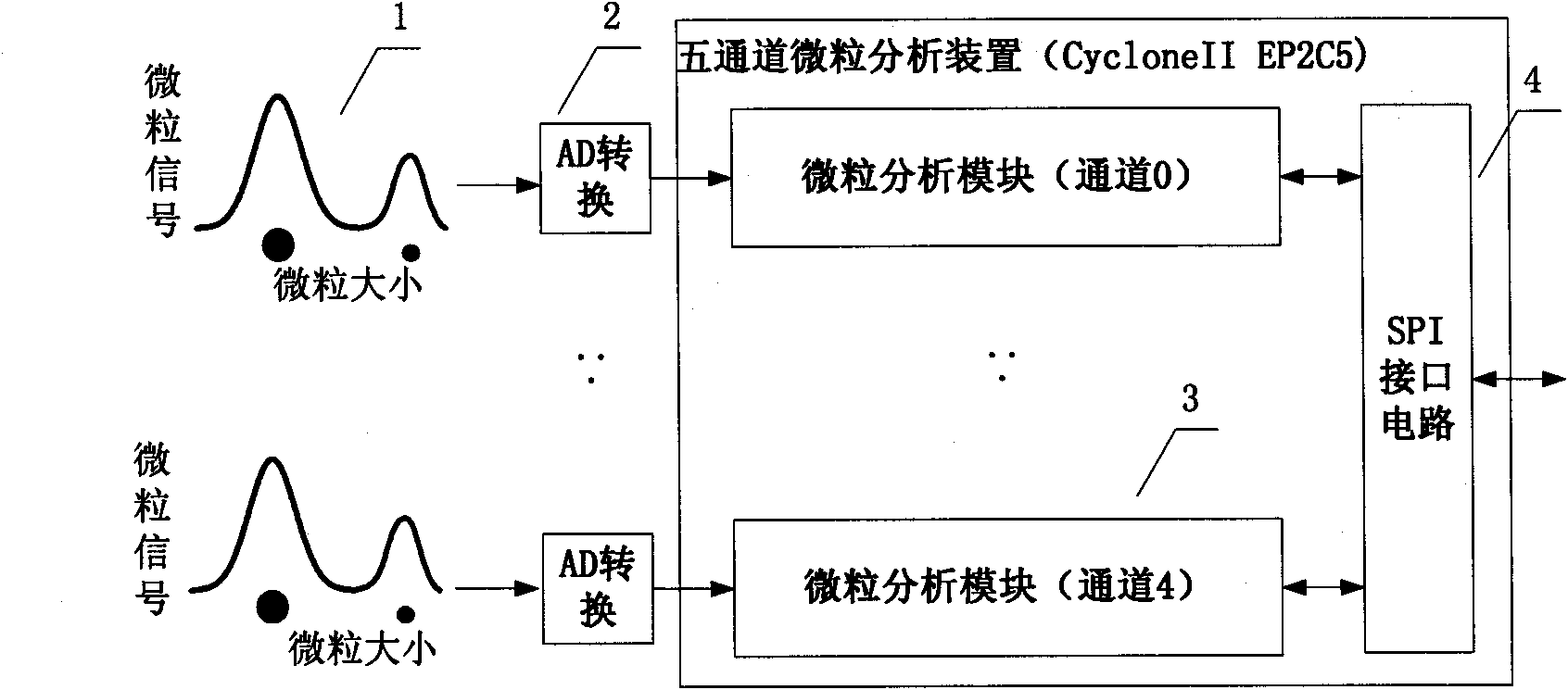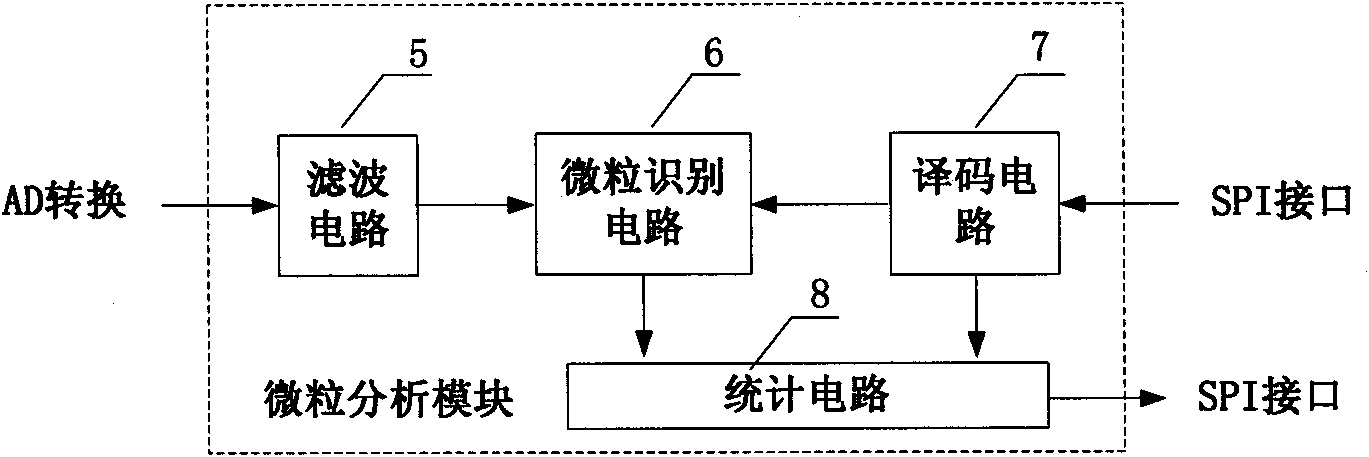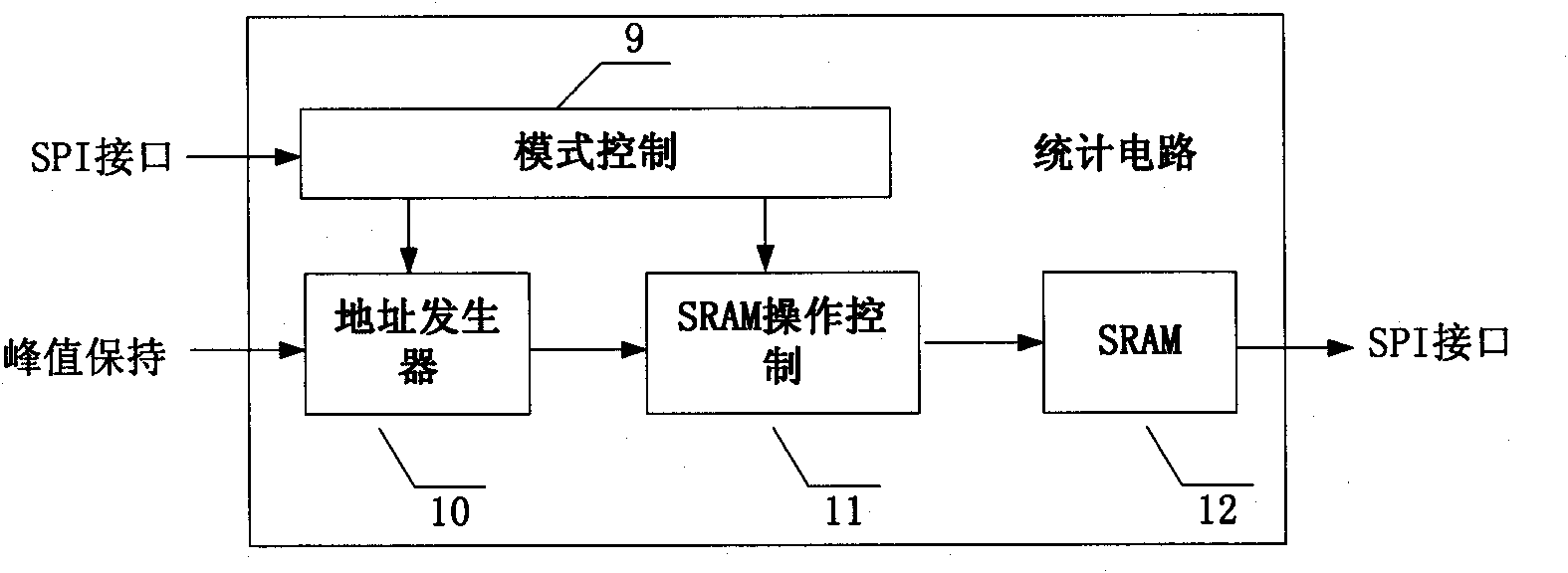FPGA-based particle detection statistical system and method
A particle and differentiator technology, applied in measurement devices, individual particle analysis, particle and sedimentation analysis, etc., can solve problems such as high hardware resource overhead, complex circuits, and circuit parameter changes, reducing complexity and cost, and improving accuracy. The effect of reliability, good classification effect
- Summary
- Abstract
- Description
- Claims
- Application Information
AI Technical Summary
Problems solved by technology
Method used
Image
Examples
Embodiment Construction
[0028] The present invention will be further described in detail below in conjunction with the accompanying drawings and embodiments.
[0029] A particle detection and statistics system based on FPGA, comprising a plurality of particle analysis modules 3 and an SPI interface circuit 4, a plurality of particle analysis modules 3 are connected to the main controller through the SPI interface circuit 4, and particle signals are connected to the main controller through the A / D converter 2 The particle analysis module 3 is connected, the particle analysis module 3 includes a filter circuit 5, a particle identification circuit 6, a decoding circuit 7 and a statistical circuit 8, the A / D converter 2 is connected with the filter circuit 5, and the filter circuit 5 is connected with the particle identification circuit 6 , the particle identification circuit 6 is connected with the decoding circuit 7, the particle identification circuit 6 is connected with the statistical circuit 8, the ...
PUM
 Login to View More
Login to View More Abstract
Description
Claims
Application Information
 Login to View More
Login to View More - R&D
- Intellectual Property
- Life Sciences
- Materials
- Tech Scout
- Unparalleled Data Quality
- Higher Quality Content
- 60% Fewer Hallucinations
Browse by: Latest US Patents, China's latest patents, Technical Efficacy Thesaurus, Application Domain, Technology Topic, Popular Technical Reports.
© 2025 PatSnap. All rights reserved.Legal|Privacy policy|Modern Slavery Act Transparency Statement|Sitemap|About US| Contact US: help@patsnap.com



